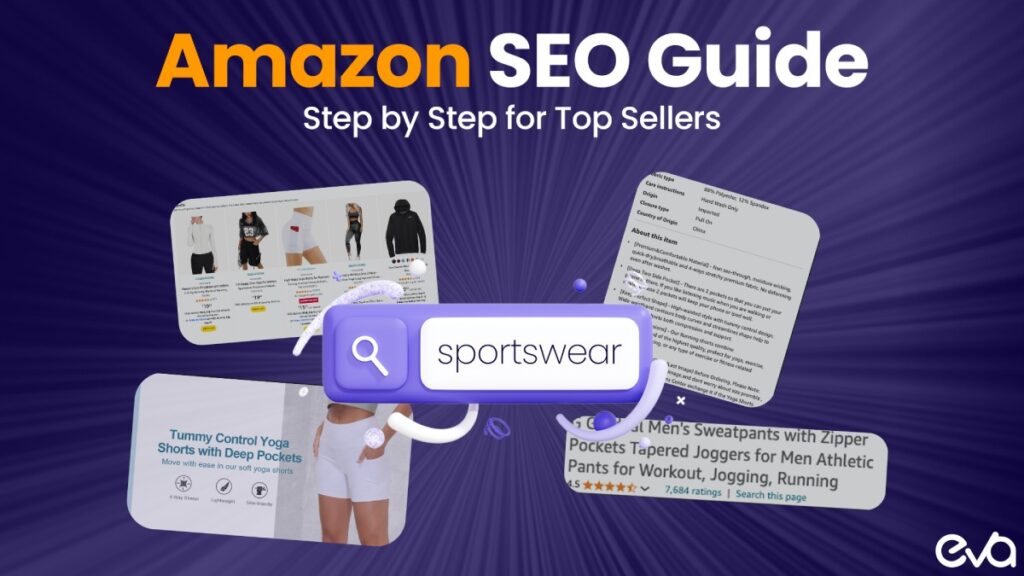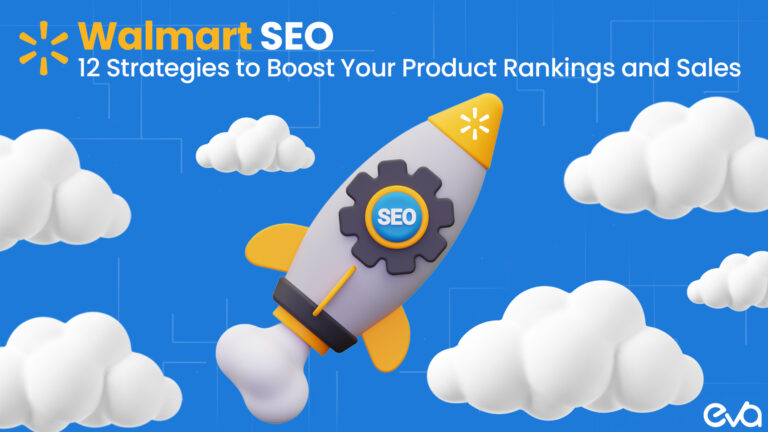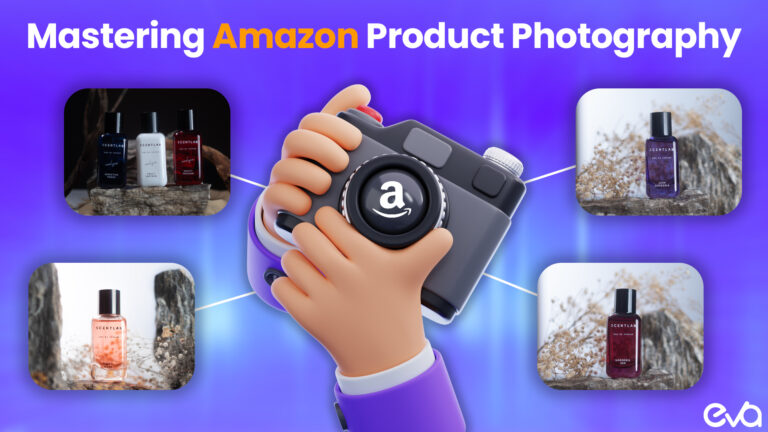When it comes to SEO, we often only consider Google, but it’s important to remember that your product may also be sold on other platforms like Amazon. Just like with regular SEO, failing to optimize for Amazon can result in less traffic and sales. 📈🛒
However, Amazon’s search algorithm works differently than Google or Bing, with fewer ranking signals to consider.
While this may seem easier, analyzing Amazon SEO from a web-SEO perspective can be tough since Amazon is primarily a buying platform. To succeed on Amazon, it’s crucial to understand its unique algorithm and optimize accordingly.
So get ready to unlock the power of Amazon SEO and embark on a journey toward unique success in 2023 and beyond! 🚀
Table of Contents
- What Is Amazon SEO?
- Keyword Research For Amazon SEO
- Analyzing Search Volume, Competition & Relevance
- Maximizing Character Limits & Readability
- 7 Tips For Creating An Informative Product Description
- Maximizing the Use of Product Images for Amazon SEO
- 5 Tips For Optimizing Image Titles, Alt Text & File Sizes
- Enhancing Product Reviews For Amazon SEO
- Leveraging Amazon A+ Content for SEO Purposes
- How To Use Backend Search Terms For Amazon SEO
- Understanding Amazon’s Search Algorithm for Better SEO
- Analyzing Competitor Listings For Amazon SEO
- Using Amazon Advertising to Boost SEO Performance
- Managing Negative Reviews & Their Impact on Amazon SEO
- Amazon’s “Frequently Bought Together” For SEO
- How To Leverage It for Cross-Selling
- The Impact of Pricing on Amazon SEO Performance
- How To Use Amazon Brand Registry For SEO Purposes
- Conclusion
- FAQs
What Is Amazon SEO?
Amazon SEO, or search engine optimization, is the art and science of optimizing product listings on Amazon to improve their visibility and organic rankings within the platform’s search results.
Just like traditional SEO focuses on ranking higher in search engines like Google, Amazon SEO is specifically tailored to the unique algorithms and customer behavior of the Amazon marketplace.
By strategically optimizing various elements of a product listing, such as keywords, titles, descriptions, bullet points, images, and reviews, you can increase your chances of appearing in relevant search queries and attracting potential customers.
Amazon SEO is not only about driving traffic to your listings but also about converting that traffic into actual sales.
Try to understand the intricacies of Amazon’s search algorithm and apply effective optimization techniques to gain a competitive edge and achieve remarkable success in the ever growing Amazon nature.
Keyword Research For Amazon SEO
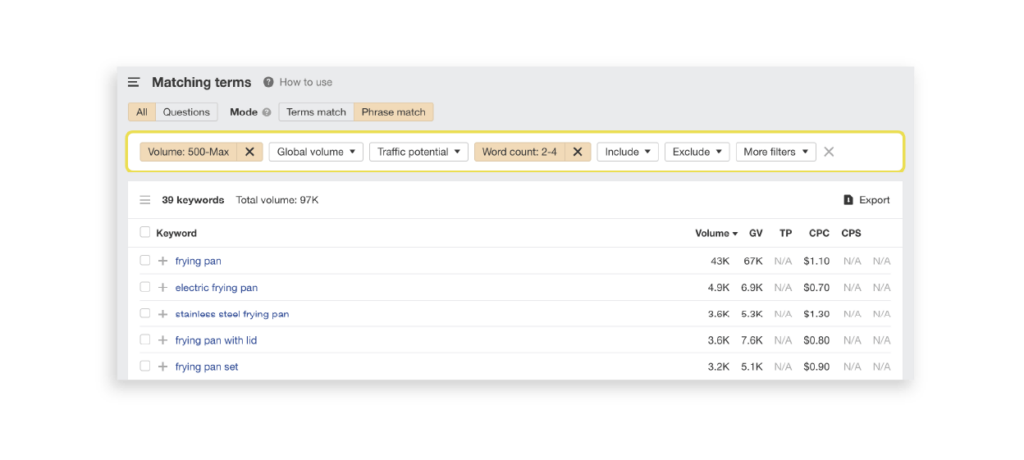
Tools & Techniques For Effective Keyword Research
Google Keyword Planner
Although primarily designed for Google Ads, the Google Keyword Planner can still be a valuable source for Amazon keyword research. It provides keyword suggestions, search volume data, and competition levels.
- For instance, if you’re selling a fitness tracker on Amazon, the Keyword Planner might suggest keywords like “best fitness tracker,” “heart rate monitor watch,” or “activity tracker with GPS.” This information can help you refine your keyword selection and optimize your Amazon listings accordingly.
Competitor Analysis
Analyzing the listings of your top competitors can reveal valuable insights about the keywords they are targeting. Tools like MerchantWords and Eva offer features that allow you to discover competitor keywords and analyze their SEO strategies.
Understand which keywords your competitors rank for to identify gaps in their strategy or uncover opportunities for your product to stand out.
Customer Reviews & Feedback
Paying attention to customer reviews and feedback can provide valuable language cues and insights into the keywords your target audience is using.
- For example, if you’re selling a portable blender, customer reviews might mention keywords like “compact size,” “powerful blending,” or “easy to clean.” Incorporating these specific keywords in your listing can help you attract customers searching for those features.
Amazon Autocomplete & Related Searches
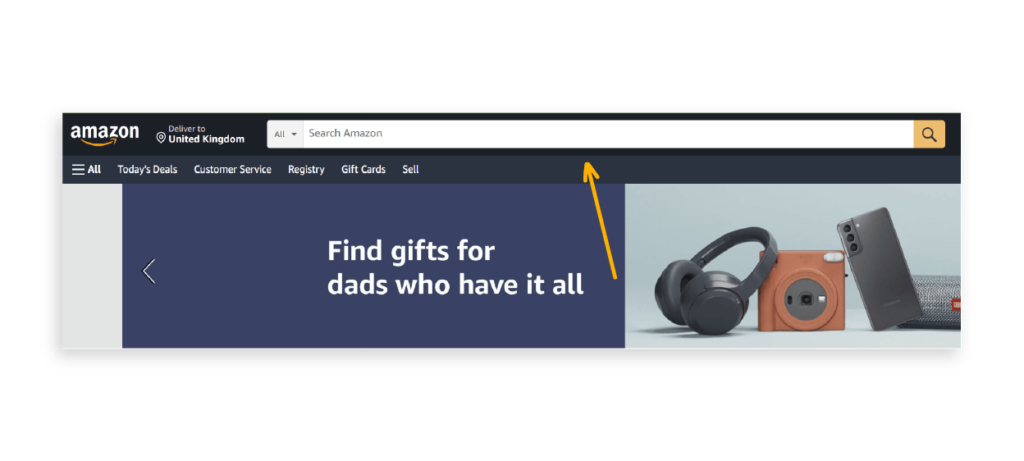
Utilizing the Amazon search bar can yield valuable keyword suggestions. As you type relevant keywords, observe the autocomplete suggestions that appear.
Additionally, scroll down to the bottom of the search results page to find the “Related searches” section, which provides additional keyword ideas.
- For instance, if you’re selling a yoga mat, typing “yoga mat” might suggest keywords like “extra thick yoga mat,” “non slip yoga mat,” or “travel friendly yoga mat.” These suggestions can guide your keyword selection and optimization efforts.
Reverse ASIN Lookup
Reverse ASIN lookup allows you to analyze competitor ASINs and uncover the keywords they are ranking for.
- For example, if a competitor’s listing for a hiking backpack ranks highly for keywords like “water proof backpack,” “hiking gear,” and “lightweight backpack,” you can incorporate similar keywords into your own listing to increase your chances of ranking higher for those terms.
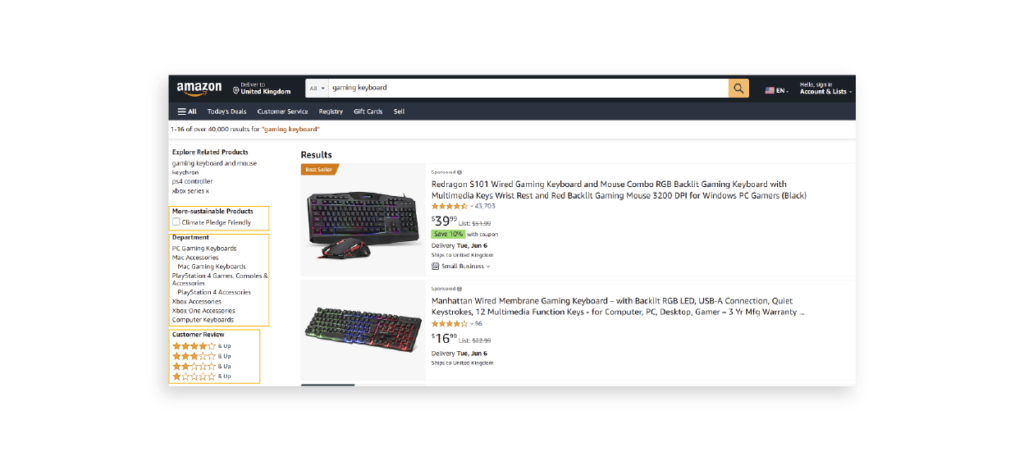
Long-Tail Keyword Exploration
Long-tail keywords are longer, more specific search phrases that typically have lower search volume but higher intent. Tools like AnswerThePublic, and KeywordTool.io can help you discover unique long tail variations.
- For instance, if you’re selling organic baby food, these tools might suggest long tail keywords like “organic baby food pouches,” “gluten free baby food options,” or “stage 2 baby food flavors.”
Target these long tail keywords to attract highly interested customers who are searching for specific products or attributes.
Analyzing Search Volume, Competition & Relevance
Understanding these factors allows you to make informed decisions when selecting keywords for your product listings.
Search Volume
- Indicates the level of demand for a particular keyword and helps you identify which keywords are popular among potential customers.
- While high search volume keywords offer greater visibility, they often come with intense competition, making it challenging to rank organically.
- Low search volume keywords may have less competition, but they might not generate significant traffic.
Competition

- Number of sellers targeting a specific keyword. Helps you understand the intensity of the competition and the effort required to rank for a particular keyword.
- It’s important to assess your resources and consider long tail keywords or niche specific terms that have lower competition.
- This strategy allows you to carve out your own space and increase your chances of ranking higher in search results.
Relevance

- It ensures that your chosen keywords align with your product and resonate with your target audience.
- Selecting keywords that accurately describe your product’s features, benefits, and use cases is crucial for attracting relevant traffic.
- By carefully analyzing search volume, competition, and relevance, you can strike a balance between targeting high demand keywords, managing competition levels, and ensuring the utmost relevance to your product.
- This data driven approach allows you to optimize your Amazon listings with keywords that have the potential to drive qualified traffic, increase visibility, and ultimately boost your sales.
Remember, successful keyword research is an ongoing process that requires monitoring and adapting to the ever changing landscape of the Amazon marketplace.
Maximizing Character Limits & Readability
- 📏 Understand Character Limits: Recognize Amazon’s character limits for listing sections like the title, bullet points, and product description.
- 🎯 Craft Concise Titles: Create titles with relevant keywords, highlighting key features and benefits of the product.
- ✅ Informative Bullet Points: Use short phrases in bullet points to detail key features, address customer pain points, and showcase product value.
- 📖 Enhance Readability: Utilize bullet points, line breaks, and capitalization for easy to digest content.
- 📝 Engaging Product Descriptions: Expand on bullet points in product descriptions using persuasive language, storytelling, and customer focused messaging.
- 🌟 Incorporate Social Proof: Include customer reviews and testimonials for credibility.
- 💡 Use Enhanced Content Features: Employ A+ Content for visually engaging images, videos, and detailed product information.
Maximizing character limits and ensuring readability in Amazon listings are crucial for effective communication of product features, entailing strategic title crafting, informative bullet points, readable formatting, engaging descriptions, social proof, and enhanced content features.
7 Tips For Creating An Informative Product Description

- Focus on crafting engaging and persuasive copy that highlights the unique selling points of your product.
- Use language that speaks directly to your target audience, addressing their pain points and emphasizing how your product solves their problems.
- Incorporate storytelling techniques to evoke emotions and create a connection with potential customers.
- Break up the description into digestible paragraphs or bullet points to improve readability and make the information easily scannable.
- Remember to strike a balance between providing enough detail to inform customers and keeping the description concise and engaging.
- Avoid excessive jargon or technical terms that may confuse or alienate your audience. Instead, use language that is accessible and relatable, ensuring that even non-experts can understand the benefits and features of your product.
- Using bullet points for Amazon SEO optimization is a highly effective strategy that allows you to present essential information in a concise and visually appealing manner.
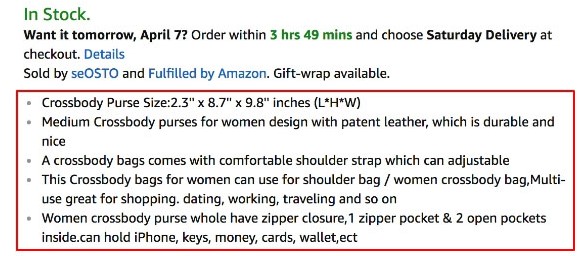
Maximizing the Use of Product Images for Amazon SEO

A good example of Product Packaging on Amazon
Maximizing the use of product images is a critical component of Amazon SEO that can make a substantial difference in your listings’ success.
The importance of high quality and optimized images cannot be overstated when it comes to capturing the attention of potential customers and driving conversions.
5 Tips For Optimizing Image Titles, Alt Text & File Sizes

- 🖼️ Image Titles with Insight: Opt for graphic, keyword rich titles such as “Laptop-Case-Brand-Model-Color.jpg” to enhance search engine understanding and ranking.
- 📝 Alt Text’s Dual Role: Craft alt text that’s keyword rich and informative, like “Smartwatch with fitness tracking and heart rate monitor,” aiding both SEO and accessibility.
- 👓 SEO Meets Accessibility: Proper alt text not only improves search visibility but also assists visually impaired users.
- 🏎️ Streamlined Image Files: Compress images to reduce file size, balancing speed and quality for faster page loading.
- ✨ Quality-Speed Equilibrium: Strike a balance between high resolution images and quick loading times to enhance user experience.
Enhancing Product Reviews For Amazon SEO
- Positive reviews and high ratings on Amazon play a fundamental role in shaping a product’s reputation. They not only enhance its position in search results but can also lead to prominent placements, such as “Best Seller” lists and “Customers Who Bought This Also Bought” sections.
- These reviews and ratings heavily influence customers’ decisions. Products with a substantial number of positive reviews and high ratings are perceived as indicators of satisfaction and quality. This instills confidence in potential buyers, assuring them of the product’s reliability and performance.
Effective Strategies to Garner More Product Reviews
- Enhancing customer experience is a powerful way to garner positive reviews. This involves delivering quality products, providing accurate and comprehensive product descriptions, and ensuring timely shipment.
- Following up with customers post purchase through personalized, concise emails is another effective strategy. Expressing gratitude for their purchase and inviting feedback can significantly increase the chances of receiving reviews.
- It’s critical to align these strategies with Amazon’s policies and guidelines. Adhering to these rules is essential to avoid any violations while soliciting reviews.
If you want to know more about how to get positive reviews:
Leveraging Amazon A+ Content for SEO Purposes
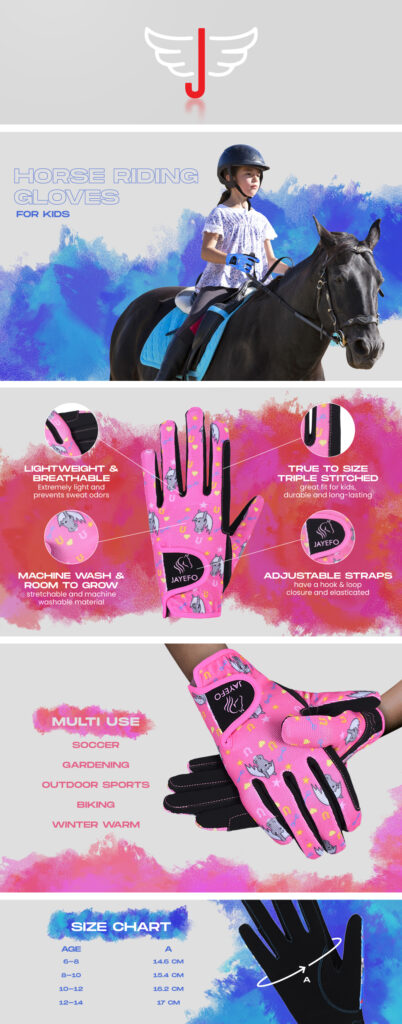

A+ Content created by Eva’s Brand & Design Service
Amazon A+ Content enriches product pages beyond standard descriptions. It allows adding engaging visuals and detailed product features. Sellers can also narrate their brand’s story.
This feature enhances the shopping experience, making it more immersive and informative. It builds customer trust in the brand and products.
A+ Content is also linked to higher conversion rates and increased sales. This makes it a valuable tool for Amazon sellers.
Creating Engaging And Informative A+ Content Modules
This strategy requires careful planning.
Start with eye catching headlines that summarize your product’s unique benefits. Use effective copywriting to emphasize its advantages.
Add images that show your product in use, lifestyle photos, and informative infographics.
- For instance, for skincare products, show before and after results with customer testimonials. This approach engages customers, builds trust, and can lead to more conversions.
Optimizing Your A+ Content For Better Search Visibility
Additionally, pay attention to the structure and formatting of your A+ Content. Ensure it is well organized, easy to navigate, and provides clear value propositions.
Use headings and subheadings to break up the content and make it scannable for customers who prefer to skim.
Including calls to action, such as “Shop Now” or “Add to Cart,” can also encourage customers to take immediate action.
How To Use Backend Search Terms For Amazon SEO
To boost Amazon SEO, knowing how backend search terms work is a must.
These are hidden keywords, unseen by customers but crucial for Amazon’s search algorithm. They help determine your product’s placement in search results. By carefully choosing relevant keywords, you can greatly improve your product’s visibility to potential customers.
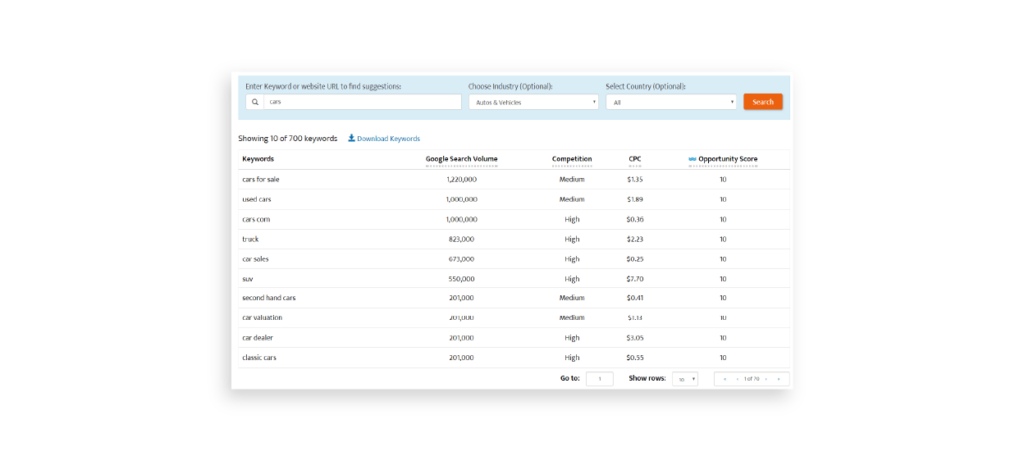
Understanding The Role Of Backend Search Terms
Backend search terms are vital cues for Amazon’s search algorithm. They clarify your product’s context and relevance. Including precise keywords about your product and its features gives the algorithm key details. This enhances matching with relevant searches, raising chances of reaching interested customers.
Selecting & Incorporating Relevant Keywords
When optimizing backend search terms, start with extensive keyword research. Brainstorm keywords related to your product. Then, assess their search volume and competition using keyword tools. Choose keywords that balance high search volume with lower competition, as these attract targeted traffic. Add these keywords to your product’s backend search term section, ensuring they align with your product’s content and purpose.
- For example, for fitness trackers, backend search terms might be “activity tracker,” “heart rate monitor,” “fitness watch,” and “step counter.” These terms closely match the product’s main features and are popular in customer searches.
Avoid Common Mistakes And Maximize Search Potential
- Avoid Keyword Stuffing: Refrain from overloading with irrelevant keywords. This violates Amazon’s guidelines and impacts readability.
- Relevant Keywords: Use relevant, strategically placed keywords. Ensure they fit naturally within the context.
- Broad vs. Specific Keywords: Mix broad terms like “wireless headphones” for a general audience. And specific terms such as “noise canceling wireless headphones” for a more focused group.
- Regular Updates: Continuously review and update backend search terms. Adapt to changing trends and customer search behaviors.
- Performance Monitoring: Keep track of how your keywords perform. Adjust them based on their effectiveness in improving search rankings and visibility.
Understanding Amazon’s Search Algorithm for Better SEO
For advanced sellers, grasping how Amazon’s search algorithm works is key to enhancing SEO and increasing product visibility.
Amazon’s A10 algorithm considers various ranking factors to determine search rankings and position products in search listings. These factors include product relevance, performance, and customer satisfaction.
Amazon A10 Algorithm & Ranking Factors
Optimizing for Amazon’s A10 Algorithm: Understand that this algorithm prioritizes relevance to customer searches. Use targeted keyword research to find the most fitting keywords for your products. Incorporate these keywords into your product titles, bullet points, and descriptions to align with relevant search queries.
Improving Performance Metrics: The A10 algorithm considers factors like sales velocity, conversion rate, click through rate, and overall sales performance. To optimize these metrics, regularly monitor and adjust your pricing strategy. Effectively manage inventory levels to meet demand and leverage Amazon advertising campaigns to increase traffic and conversions.
Prioritizing Customer Satisfaction: Customer satisfaction is a key component of Amazon’s algorithm. High quality customer reviews and ratings, coupled with exceptional customer service, can lead to higher product rankings. Actively engage with customer reviews, address product quality issues. Ensure that your customer service is responsive and helpful to maintain customer satisfaction and loyalty.
Leveraging Advertising & Promotional Strategies
Using Amazon’s advertising tools is crucial for market competitiveness. Options include Sponsored Products, Brands, and Display ads. These boost product visibility and sales.
Also, promotions like Lightning Deals and coupons draw customer attention. They encourage impulse purchases by creating urgency. Monitoring and optimizing campaigns is essential.
Regularly analyze performance, adjust bids, and refine targeting for maximum ROI.
Analyzing Competitor Listings For Amazon SEO

Analyzing competitor listings for Amazon SEO provides you with a wealth of information that can shape your own strategy and set you apart from the competition.
Competitive Analysis On Amazon
Analyzing competitor listings offers insights into market trends and consumer behavior. Studying successful competitors reveals best practices for your own listings.
- For instance, if a competitor ranks high with strong conversions, their keywords, images, and descriptions are likely effective. Use this knowledge to enhance your strategies and boost your success.
Identifying Competitor Keywords & Strategies
Competitor analysis reveals keywords that others target effectively. Use research tools or manual reviews to find these keywords.
- For example, fitness equipment sales, if a competitor ranks well for “home gym equipment” or “workout accessories,” it shows these terms’ relevance.
Use this info to optimize your listing with similar keywords.
Also, study how competitors position their products, their unique propositions, and pricing.
This helps understand their differentiation and customer engagement strategies. If a competitor focuses on eco friendly materials or unique warranties, consider these elements in your products and messaging. This approach can help you stand out and attract specific customer segments.
Using Amazon Advertising to Boost SEO Performance
If competitors gain an advantage from high ratings and reviews, focus on getting real feedback. Effectively managing your reputation can build trust and credibility with your customers.
By leveraging Amazon PPC (Pay-Per-Click) advertising options, you can strategically target relevant keywords and reach a wider audience.
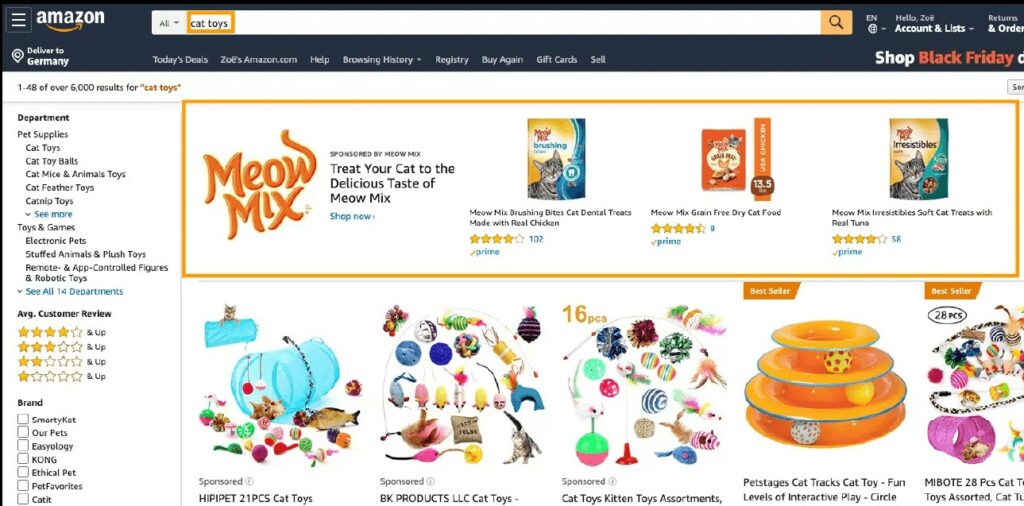
Amazon PPC Ad Types
- Sponsored Products: Focus on individual products, appearing directly in Amazon’s search results. Ideal for promoting specific items to customers searching for similar products.
- Sponsored Brands: Highlight your overall brand and a selection of products. These ads are featured prominently and help in building brand recognition among customers.
- Sponsored Displays: These ads appear on relevant product detail pages, grabbing the attention of customers already interested in similar items. They’re effective for increasing visibility and cross selling or upselling opportunities.
Maximizing Advertising ROI & Organic Ranking Benefits
To optimize ROI and organic ranking from Amazon ads, regular performance monitoring is key. Analyze ad data to identify high converting keywords and adjust bids. By refining campaigns, you can use your ad budget more effectively for better ROI.
Increased ad exposure often leads to more organic clicks and conversions, boosting organic search ranking.
Advertising and SEO together enhance product visibility, drive sales, and improve overall SEO performance.
Managing Negative Reviews & Their Impact on Amazon SEO
Managing negative reviews is a critical aspect of maintaining a strong presence on Amazon and optimizing your SEO performance. Negative reviews can have a significant impact on potential customers’ perception of your product and brand.
However, by implementing effective strategies, you can proactively address negative feedback and mitigate its impact.
How To Handle Negative Customer Feedback
- Stay attentive and monitor customer reviews regularly. This allows you to identify and address any negative feedback promptly.
- Maintain a calm and professional demeanor when responding to negative reviews. Avoid getting defensive or engaging in arguments. Instead, focus on understanding the customer’s concerns and finding a satisfactory resolution.
- Take the conversation offline when appropriate. If an issue needs detailed discussion or personal information, suggest that the customer contacts you privately. They can use direct messaging or customer support channels.
Responding To Reviews & Addressing Concerns
- Respond to negative reviews in a timely manner. This demonstrates your commitment to customer satisfaction and shows potential customers you are proactive in resolving issues.
- Apologize for any inconvenience or dissatisfaction the customer may have experienced. Empathize with their concerns and assure them that their feedback is taken seriously.
- Provide a clear and concise explanation of how you plan to address the issue or resolve the problem. If necessary, offer solutions, alternatives, or refunds, demonstrating your commitment to customer happiness.
Minimizing The Impact Of Negative Reviews On SEO Performance
Encourage happy customers to write positive reviews. Request feedback through follow up emails or campaigns. This balances negative reviews and boosts your rating.
Prioritize exceptional customer experiences. Offer quality products, reliable shipping, and excellent service. This reduces negative reviews and fosters positive feelings.
Regularly update your product using customer feedback. Treat negative reviews as chances to improve and enhance your product’s quality.
Amazon’s “Frequently Bought Together” For SEO
Using Amazon’s “Frequently Bought Together” feature for SEO can greatly boost your product visibility and sales. Understanding its importance is key to making the most of it.
This feature shows products often purchased with the item customers are viewing. It builds trust and social proof among potential buyers.
When customers see these items bought together, it suggests they complement each other. This boosts confidence in buyers’ decisions. As a seller, analyzing these patterns offers insights into customer preferences and cross selling opportunities.
How To Leverage It for Cross-Selling
Start by identifying related or complementary products that align with your target audience’s needs and preferences.
- For example, if you sell a coffee machine, you can consider offering coffee filters or a coffee grinder as frequently bought items.
This way, you incentivize customers to add them to their cart. You can also create product bundles to sell the items together as a package deal. This approach not only increases the average order value but also enhances the customer experience by providing a convenient one stop solution.
How To Optimize Your Listings Based On It
Make sure your product descriptions and images clearly show compatibility and the benefits of buying items together.
Use persuasive language to explain how combining these products improves the overall user experience.
- For instance, if you sell a camera, highlight that buying a tripod or an extra lens enhances its photography capabilities and versatility.
Also, optimize your product titles and backend search terms with relevant keywords. This connects your product to frequently bought items. When customers browse related products, yours becomes more visible and has a higher chance of being in the “Frequently Bought Together” recommendations.
The Impact of Pricing on Amazon SEO Performance
The impact of pricing on Amazon SEO performance is significant, as it directly influences visibility, sales, and overall success. Understanding how pricing and sales are interconnected is crucial for optimizing your SEO strategy effectively.
The Pricing-Sales Relationship
Pricing requires a balance between profitability and competitiveness. Research indicates that pricing plays a pivotal role in Amazon consumers’ decision-making.
Customers often compare prices among different listings, considering product quality, reviews, and shipping options.
Competitive pricing enhances the chances of winning the Buy Box, a critical factor in boosting sales and SEO performance. Listings with appealing prices attract more clicks, resulting in higher click through rates and improved search visibility.
Strategies To Competitively Price Products For Better SEO

To set competitive prices for your products, begin by conducting comprehensive market research. Analyze the pricing landscape in your niche, taking into account production costs, competitor pricing, and perceived value.
Identify opportunities to stand out from competitors, whether through lower prices, unique features, or bundled offers. You can also explore dynamic pricing strategies that adjust prices based on demand shifts, seasonal trends, or competitor moves.
Furthermore, consider offering discounts, time limited promotions, or exclusive deals to capture attention and increase sales, ultimately enhancing your SEO performance.
Analyzing Pricing Data & Adjusting Strategies Accordingly
- Regularly analyze pricing data and monitor market trends to make informed decisions.
- Utilize tools and software like Eva for insights into competitor pricing, market demand, and consumer behavior.
- Pay attention to seasonal fluctuations, such as holiday sales or shopping events, and adjust pricing strategies accordingly.
- Keep a close eye on customer reviews and feedback to gauge perceived product value and make pricing adjustments when necessary.
Alternatively, if you offer premium or unique features, you might position your prices slightly higher to convey superior quality and value. Regularly monitoring pricing data and adjusting your strategies based on market conditions can help you adapt to changing customer preferences and stay ahead of the competition.
How To Use Amazon Brand Registry For SEO Purposes

Amazon’s Brand Registry is a powerful tool that not only provides brand protection but also offers significant benefits for SEO optimization.
By understanding how to leverage the Brand Registry, sellers can enhance their visibility, protect their intellectual property, and establish a trusted presence on the Amazon platform.
Benefits Of Amazon Brand Registry For Brand Protection And SEO
- Protecting your brand identity: Brand Registry allows you to safeguard your trademarks, logos, and product images, preventing unauthorized sellers from infringing upon your intellectual property. This protection ensures that your brand’s reputation remains intact and helps you maintain control over your listings.
- Enhanced search visibility: Brand Registry gives you access to valuable features that can boost your SEO efforts. You can create enhanced brand content, such as A+ content, to showcase your brand story and engage customers more effectively. This content contributes to higher search rankings, increased customer trust, and ultimately, improved conversion rates.
- Enhanced brand presence: Brand Registry enables you to create a brand store on Amazon, showcasing your entire product portfolio in one dedicated location. This helps to establish your brand’s credibility and provides customers with a cohesive brand experience, strengthening brand loyalty and driving repeat purchases.
- Streamlined reporting and enforcement: Brand Registry provides robust reporting tools that allow you to monitor and report potential infringements more efficiently. This helps in swiftly taking action against counterfeit products or unauthorized sellers, safeguarding your brand, and protecting your customers.
Conclusion
Amazon SEO is crucial for sellers who want to rank higher, increase visibility, and ultimately sell more on the platform.
In this guide, we’ve covered a range of strategies to improve your Amazon listings. We started with keyword research, then moved on to structuring product titles, creating clear descriptions, using bullet points, and making the most of Amazon’s Brand Registry tool.
By implementing these expert tips and staying updated on Amazon’s algorithm updates, you can stay ahead of the competition and maximize your chances of success.
Remember, if you ever need expert assistance with Amazon SEO, don’t hesitate to reach out to Eva. Our team of professionals is ready to provide a free consultation and help you navigate the intricacies of Amazon SEO to achieve your business goals.
So, take the next step and get in touch with Eva for expert guidance tailored to your specific needs. Elevate your Amazon SEO strategies and watch your sales soar.
FAQs
The cost of Amazon SEO can vary, depending on several factors.
These factors include the complexity of your product catalog, the competition in your niche, and the level of expertise required.
Some sellers choose to handle SEO optimization themselves, investing time and effort. Others may opt to hire professional Amazon SEO service providers.
The cost can range from doing it yourself to hiring experts. It’s important to consider the potential return on investment when budgeting for Amazon SEO.
Amazon SEO offers a host of advantages. When you optimize your product listings, you boost their visibility in Amazon’s search results, making it simpler for potential customers to discover your items.
Better rankings result in more organic traffic, improved conversion rates, and ultimately, greater sales.
Amazon SEO also aids in establishing a robust brand presence, strengthening customer confidence, and setting your products apart from rivals, ultimately leading to long-term growth and success on the platform.
To rank higher for keywords on Amazon, you need a solid SEO strategy.
Begin by conducting thorough keyword research to find the right keywords for your products.
Next, optimize your product titles, descriptions, bullet points, and backend search terms by including these keywords strategically.
Craft engaging, benefit driven content that speaks to your target audience. You can also make use of Amazon advertising campaigns and effectively use Amazon’s backend search term fields.
Lastly, keep an eye on your listings, making regular updates to stay competitive in the ever changing world of Amazon SEO.

